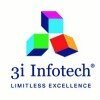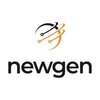Filter interviews by
RAMTeCH Software Solutions GIS Engineer Interview Questions and Answers
15 Interview questions
ArcGIS is a proprietary software developed by Esri, while QGIS is an open-source software. Both are used for GIS mapping and analysis.
ArcGIS is a proprietary software developed by Esri, while QGIS is an open-source software.
ArcGIS has a more user-friendly interface and advanced features, but it comes with a cost.
QGIS is free to use and has a strong community support for plugins and extensions.
Both software can per...
A permit is an official document or license that allows someone to do something, such as construction or land use.
Permits are required for various activities like construction, land development, zoning changes, etc.
To start permit work, one must first determine the type of permit needed and the requirements for obtaining it.
Next, the applicant must fill out the necessary forms and submit them to the appropriate go...
AutoCAD is a computer-aided design software used for creating 2D and 3D drawings and models.
AutoCAD is widely used in various industries such as architecture, engineering, and construction.
It allows users to create precise drawings and models with tools like lines, shapes, and dimensions.
AutoCAD supports both 2D drafting and 3D modeling, making it versatile for different design needs.
Users can also add annotations...
CWDM and DWDM are multiplexers used in optical communication networks to combine multiple signals onto a single fiber or split signals into multiple fibers.
CWDM (Coarse Wavelength Division Multiplexing) combines multiple signals onto a single fiber by using different wavelengths of light.
DWDM (Dense Wavelength Division Multiplexing) also combines multiple signals onto a single fiber but with more closely spaced wa...
Design involves creating a plan or concept, drafting is the process of creating detailed technical drawings, and analyzing involves evaluating data or information.
Design is the initial phase where ideas and concepts are developed.
Drafting is the technical process of creating detailed drawings based on the design.
Analysis involves evaluating data or information to draw conclusions or make decisions.
For example, in ...
EPON Designing refers to the process of designing Ethernet Passive Optical Networks for efficient data transmission.
EPONs use passive optical splitters to distribute data to multiple end users
EPONs are cost-effective and scalable for delivering high-speed internet access
EPONs typically operate at speeds of 1 Gbps or 10 Gbps
EPONs are commonly used in fiber-to-the-home (FTTH) networks
Coaxial network is a type of cable network that uses a central conductor surrounded by an insulating layer and a shield. Power network refers to the distribution of electrical power through a network of cables and transformers.
Coaxial network consists of a central conductor, insulating layer, and shield to transmit data signals.
Coaxial cables are commonly used in cable television, internet connections, and network...
FTTH stands for Fiber to the Home, while FTTB stands for Fiber to the Building.
FTTH (Fiber to the Home) provides fiber optic connections directly to individual residences or buildings.
FTTB (Fiber to the Building) provides fiber optic connections to a central point within a building, with individual connections then distributed within the building.
FTTH offers higher bandwidth and faster speeds compared to FTTB.
FTTH...
My strength lies in my problem-solving skills, attention to detail, and ability to work well under pressure.
Strong problem-solving skills
Attention to detail
Ability to work well under pressure
Previews projects are a feature in ArcGIS Pro that allow users to create and share project templates.
Previews projects can be used to create standardized project templates for specific workflows or industries.
These templates can include pre-configured maps, layouts, and data connections.
Users can share their preview projects with others, allowing for consistent project creation across teams.
Preview projects can al...
RAMTeCH Software Solutions GIS Engineer Interview Experiences
10 interviews found
I applied via Walk-in and was interviewed in Jul 2024. There was 1 interview round.
(10 Questions)
- Q1. What is the difference between Ftth and Fttb
- Ans.
FTTH stands for Fiber to the Home, while FTTB stands for Fiber to the Building.
FTTH (Fiber to the Home) provides fiber optic connections directly to individual residences or buildings.
FTTB (Fiber to the Building) provides fiber optic connections to a central point within a building, with individual connections then distributed within the building.
FTTH offers higher bandwidth and faster speeds compared to FTTB.
FTTH is m...
- Q2. Detailed explain about HFC network
- Ans.
HFC network stands for Hybrid Fiber-Coaxial network, which is a type of broadband network that combines fiber optic and coaxial cable technologies.
HFC networks are commonly used by cable TV and internet providers to deliver high-speed internet and television services to customers.
Fiber optic cables are used for the backbone of the network, providing high bandwidth and fast data transmission.
Coaxial cables are used for ...
- Q3. What is HLD design? How to receive input from client
- Ans.
HLD design stands for High Level Design, it is a design document that describes the overall system architecture and design.
HLD design outlines the structure of the system, including components, modules, interfaces, and data for the system.
It focuses on the overall system design rather than detailed design of individual components.
To receive input from the client for HLD design, conduct meetings, interviews, surveys, an...
- Q4. What is permit and how to start permit work
- Ans.
A permit is an official document or license that allows someone to do something, such as construction or land use.
Permits are required for various activities like construction, land development, zoning changes, etc.
To start permit work, one must first determine the type of permit needed and the requirements for obtaining it.
Next, the applicant must fill out the necessary forms and submit them to the appropriate governm...
- Q5. Explain Coaxial and power network?
- Ans.
Coaxial network is a type of cable network that uses a central conductor surrounded by an insulating layer and a shield. Power network refers to the distribution of electrical power through a network of cables and transformers.
Coaxial network consists of a central conductor, insulating layer, and shield to transmit data signals.
Coaxial cables are commonly used in cable television, internet connections, and networking a...
- Q6. CWDM and DWDM are muxes or splitter, explain their functions.
- Ans.
CWDM and DWDM are multiplexers used in optical communication networks to combine multiple signals onto a single fiber or split signals into multiple fibers.
CWDM (Coarse Wavelength Division Multiplexing) combines multiple signals onto a single fiber by using different wavelengths of light.
DWDM (Dense Wavelength Division Multiplexing) also combines multiple signals onto a single fiber but with more closely spaced wavelen...
- Q7. What is circuit manager? How to create it.
- Ans.
Circuit Manager is a tool used in GIS to manage and organize electrical circuits.
Circuit Manager is used to create, edit, and manage electrical circuits in GIS software.
It allows users to define the connectivity between different electrical components.
Users can assign attributes to circuits such as voltage, current, and resistance.
Circuit Manager helps in analyzing and simulating electrical networks.
To create a circuit...
- Q8. Elaborate about EPON Designing?
- Ans.
EPON Designing refers to the process of designing Ethernet Passive Optical Networks for efficient data transmission.
EPONs use passive optical splitters to distribute data to multiple end users
EPONs are cost-effective and scalable for delivering high-speed internet access
EPONs typically operate at speeds of 1 Gbps or 10 Gbps
EPONs are commonly used in fiber-to-the-home (FTTH) networks
- Q9. What is AutoCAD tool.
- Ans.
AutoCAD is a computer-aided design software used for creating 2D and 3D drawings and models.
AutoCAD is widely used in various industries such as architecture, engineering, and construction.
It allows users to create precise drawings and models with tools like lines, shapes, and dimensions.
AutoCAD supports both 2D drafting and 3D modeling, making it versatile for different design needs.
Users can also add annotations, tex...
- Q10. Explain differences between design, drafting and analysing.
- Ans.
Design involves creating a plan or concept, drafting is the process of creating detailed technical drawings, and analyzing involves evaluating data or information.
Design is the initial phase where ideas and concepts are developed.
Drafting is the technical process of creating detailed drawings based on the design.
Analysis involves evaluating data or information to draw conclusions or make decisions.
For example, in GIS e...
Interview Preparation Tips
Skills evaluated in this interview
I appeared for an interview in Jul 2024.
(5 Questions)
- Q1. What is the your previous company experience....?
- Ans.
I have 3 years of experience working as a GIS Engineer at a consulting firm.
Managed GIS data for various projects
Developed custom GIS applications using Python and ArcGIS
Provided GIS analysis and mapping support to clients
- Q2. Tell me about arc gis or other gis softwares
- Ans.
ArcGIS is a popular GIS software used for mapping and spatial analysis.
ArcGIS is developed by Esri and is widely used in various industries such as urban planning, natural resource management, and emergency response.
It allows users to create, analyze, and visualize spatial data through maps and layers.
ArcGIS includes tools for geocoding, routing, and spatial analysis to help users make informed decisions based on geogr...
- Q3. How much salary expected...?
- Ans.
Salary expectations for a GIS Engineer vary based on experience, location, and company size.
Salary expectations can range from $50,000 to $100,000+ per year
Factors such as years of experience, education level, and certifications can impact salary
Location plays a significant role in salary expectations, with higher salaries in urban areas compared to rural areas
Company size and industry can also influence salary offers
- Q4. What is difference between arc gis and q gis...?
- Ans.
ArcGIS is a proprietary software developed by Esri, while QGIS is an open-source software. Both are used for GIS mapping and analysis.
ArcGIS is a proprietary software developed by Esri, while QGIS is an open-source software.
ArcGIS has a more user-friendly interface and advanced features, but it comes with a cost.
QGIS is free to use and has a strong community support for plugins and extensions.
Both software can perform ...
- Q5. What is the use duct...?
- Ans.
A duct is a tube or passage that carries air, liquid, or other substances.
Ducts are commonly used in HVAC systems to distribute air throughout a building.
In GIS, ducts can represent underground utility lines such as water pipes or electrical cables.
Ducts can also refer to channels in the body that carry fluids, such as the bile duct or tear duct.
(2 Questions)
- Q1. What is your previous company...?
- Ans.
I worked at a multinational engineering consulting firm specializing in GIS solutions.
Provided GIS analysis and mapping services for various projects
Developed custom GIS applications to meet client needs
Collaborated with team members to integrate GIS data with other systems
- Q2. What is your previous company ctc for annum...?
- Ans.
My previous company's CTC was $80,000 per annum.
My previous company offered a CTC of $80,000 per annum.
The CTC included salary, bonuses, and benefits.
I received a salary of $65,000 with additional benefits and bonuses totaling $15,000.
The CTC was structured to include various components such as base salary, incentives, and allowances.
Interview Preparation Tips
Say few words about your previous company responsibilities and now we can do it for the present company. Everything is fine all the best.
(2 Questions)
- Q1. Describe Your Self
- Q2. Elaborate your Strength
- Ans.
My strength lies in my problem-solving skills, attention to detail, and ability to work well under pressure.
Strong problem-solving skills
Attention to detail
Ability to work well under pressure
Interview Preparation Tips

(1 Question)
- Q1. Arc map 10.16

I applied via Referral and was interviewed before Sep 2019. There were 3 interview rounds.
Interview Questionnaire
5 Questions
- Q1. Why? Specially Ramtech aggriment in freshers 3 years
- Ans. In this company, when join a fresher after complete the one year's compare to other company..the salary increment is very low like per head 1k. So people are living Ramtech, that's why they are extend 2 to 3 year's.. management also very bad
- Q2. Very low salary? present Generation they are given salary only use for hostel fees
- Ans. As a fresher they are giving salary per month 8k, now days each and every thing living cost is ver high compare to last 3 year's, for example in hostel fee per month Max. 4 to 5k...and bus pass 1200...very 😞
- Q3. Please don't write a aggreement...
- Q4. In this company no respect for Employees
- Q5. Management not Good and policy very bad
Interview Preparation Tips
(1 Question)
- Q1. Explain Priviews projects
- Ans.
Previews projects are a feature in ArcGIS Pro that allow users to create and share project templates.
Previews projects can be used to create standardized project templates for specific workflows or industries.
These templates can include pre-configured maps, layouts, and data connections.
Users can share their preview projects with others, allowing for consistent project creation across teams.
Preview projects can also be...
(1 Question)
- Q1. What about ur working project & salary
Interview Preparation Tips
I applied via Campus Placement and was interviewed before Dec 2020. There were 3 interview rounds.
Interview Questionnaire
3 Questions
- Q1. Written exam nd gd
- Q2. Aptitude reasoning grammar Microsoft
- Q3. Telecom basic
Interview Preparation Tips
I applied via Walk-in and was interviewed before Dec 2021. There were 2 interview rounds.

(2 Questions)
- Q1. Question as per my education and experience.
- Q2. Questions for design and planning.
Interview Preparation Tips
Interview Questionnaire
1 Question
- Q1. Related to self and role
I appeared for an interview before Oct 2021.
(3 Questions)
- Q1. Talk your native place
- Q2. Talk about your experience
- Q3. Explain yourself and
Interview Preparation Tips
Top trending discussions






RAMTeCH Software Solutions Interview FAQs
Tell us how to improve this page.
RAMTeCH Software Solutions Interviews By Designations
- RAMTeCH Software Solutions GIS Engineer Interview Questions
- RAMTeCH Software Solutions Senior GIS Engineer Interview Questions
- RAMTeCH Software Solutions Team Lead Interview Questions
- RAMTeCH Software Solutions Telecom Engineer Interview Questions
- RAMTeCH Software Solutions Junior Team Leader Interview Questions
- RAMTeCH Software Solutions MIS Executive Interview Questions
- RAMTeCH Software Solutions Senior Engineering Manager Interview Questions
- RAMTeCH Software Solutions Computer Operator Interview Questions
- Show more
Interview Questions for Popular Designations
Overall Interview Experience Rating
based on 16 interview experiences
Difficulty level
Duration
Interview Questions from Similar Companies
RAMTeCH Software Solutions GIS Engineer Reviews and Ratings
based on 151 reviews
Rating in categories
|
GIS Engineer
604
salaries
| ₹1.8 L/yr - ₹5 L/yr |
|
Senior GIS Engineer
493
salaries
| ₹2.6 L/yr - ₹6.7 L/yr |
|
Telecom Engineer
228
salaries
| ₹2 L/yr - ₹5 L/yr |
|
Junior GIS Engineer
147
salaries
| ₹1.6 L/yr - ₹4.2 L/yr |
|
Team Lead
108
salaries
| ₹3.9 L/yr - ₹9 L/yr |

ITC Infotech

3i Infotech

Sify Technologies

Microland
- Home >
- Interviews >
- RAMTeCH Software Solutions Interview Questions















